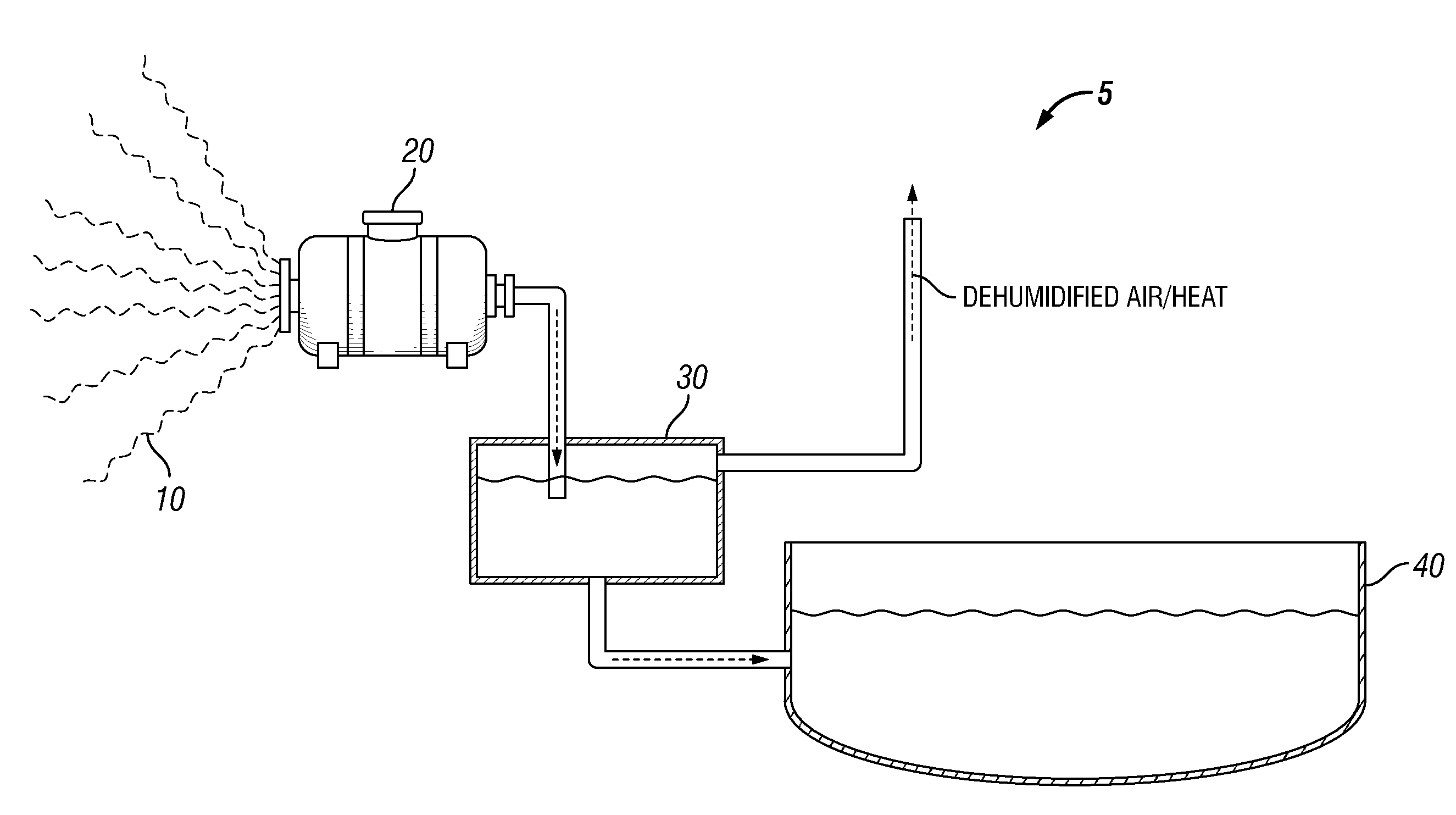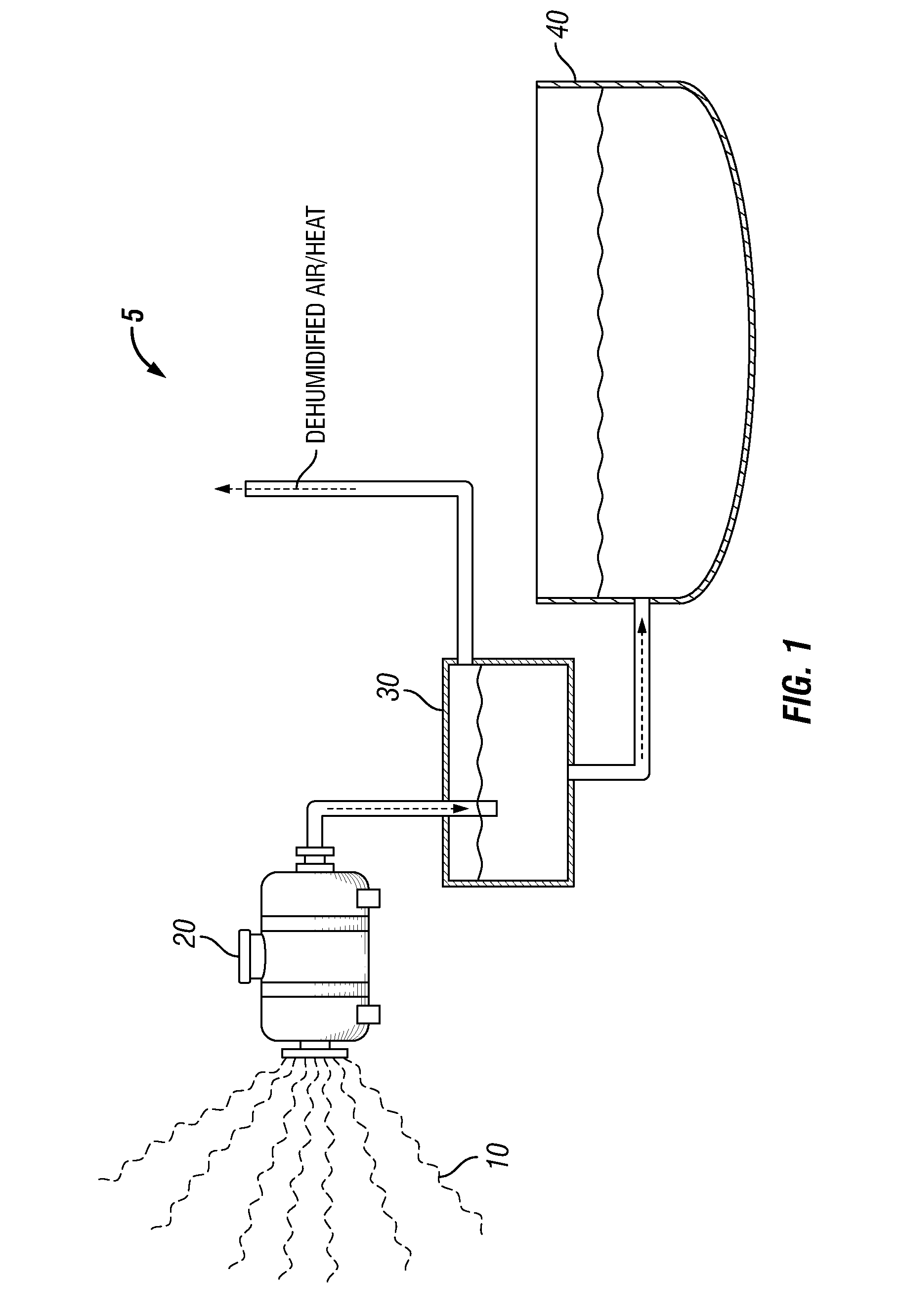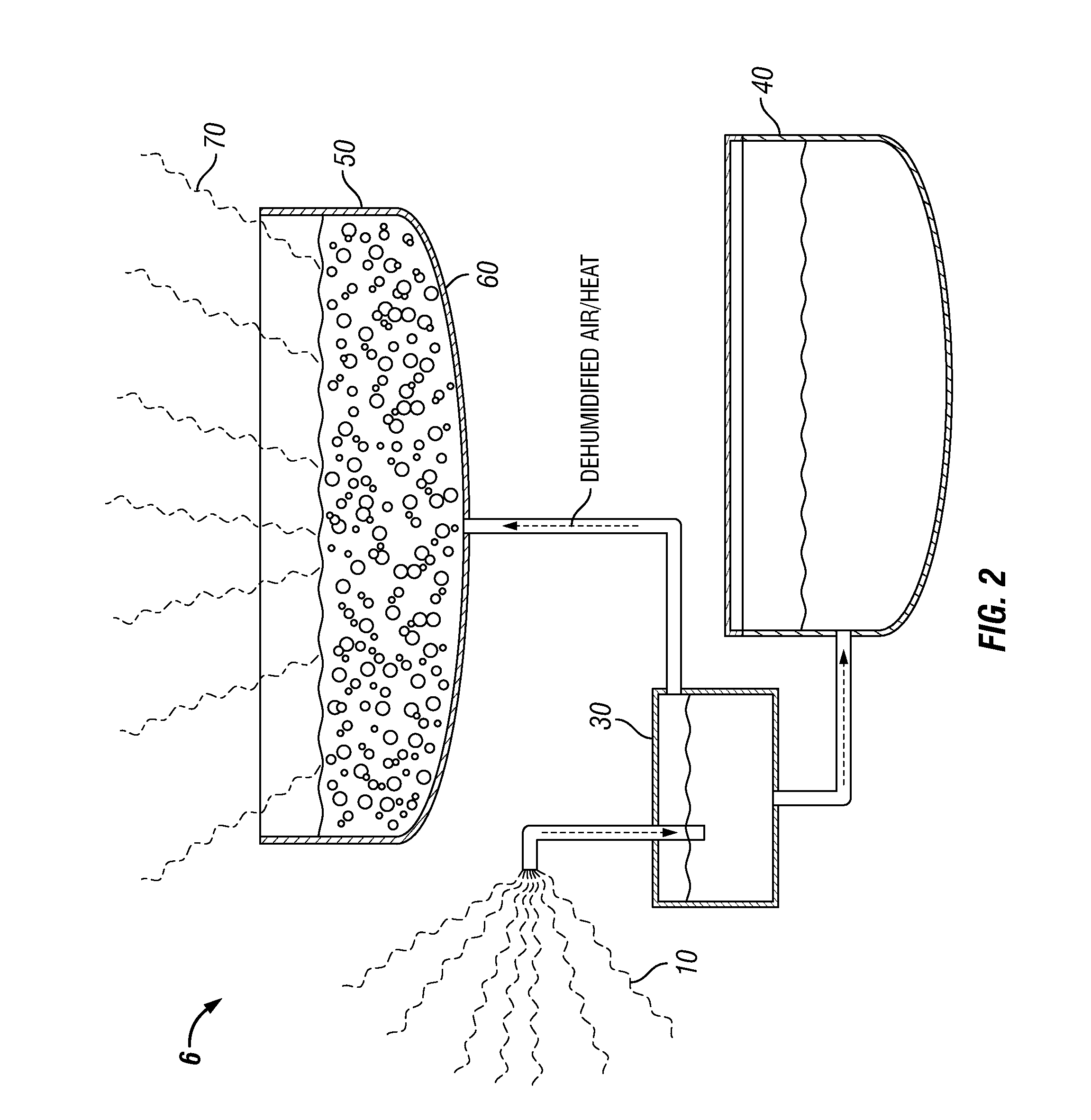Process for Water Treatment and Generation
a technology of water treatment and water storage, applied in the direction of vacuum distillation separation, separation process, vessel construction, etc., can solve the problems of difficult or cost prohibitive delivery of fresh water via trucking, difficulty in acquiring fresh water, and insufficient fresh water sources, so as to achieve safe human consumption, improve efficiency and throughput/footprint ratio, and reduce contaminants
- Summary
- Abstract
- Description
- Claims
- Application Information
AI Technical Summary
Benefits of technology
Problems solved by technology
Method used
Image
Examples
example 1
[0037]FIG. 1 shows an apparatus 5, according to one or more embodiments of the present invention. The apparatus includes a compressor 20, a water generator reservoir 30, and a purified water reservoir 40. In the embodiment shown, the water generator reservoir 30 is fluidly connected to both the compressor 20 and the purified water reservoir 40.
[0038]As shown in FIG. 1, the compressor 20 may be configured to receive and compress ambient air 10, for example, in order to generate compressed ambient air. The compressed ambient air may then be conveyed to the water generator reservoir 30. In the water generator reservoir 30, the compressed ambient air may be dehumidified by cooling in order to extract purified water and release dehumidified air and heat back into the ambient air 10. The purified water is separated and conveyed to the purified water reservoir 40 where it may be stored, for example.
example 2
[0039]FIG. 2 shows another apparatus 6, according to one or more embodiments of the present invention. The apparatus includes a water generator reservoir 30, a purified water reservoir 40, and a contaminated water reservoir 50. In the embodiment shown, the water generator reservoir 30 is fluidly connected to the purified water reservoir 40 and the contaminated water reservoir 50.
[0040]As shown in FIG. 2, the water generator reservoir 30 may be configured to receive and dehumidify the ambient air 10, thereby resulting in the generation of purified water and dehumidified air and heat. The purified water may be conveyed to the purified water reservoir 40, and the dehumidified air and heat may be ejected from the water generator reservoir 30 and received for recycling in the contaminated water reservoir 50 which contains produced water. In some embodiments, as generally discussed above, the dehumidified air and the heat helps to volatilize the produced water by forming bubbles 60 that r...
example 3
[0041]FIG. 3 shows another apparatus 7, according to one or more embodiments of the present invention. The apparatus includes a water generator reservoir 30, a purified water reservoir 40, and a contaminated water reservoir 50. In the embodiment shown, the water generator reservoir 30 may be fluidly connected to both the purified water reservoir 40 and the contaminated water reservoir 50.
[0042]As shown in FIG. 3, the contaminated water reservoir 50 contains produced water that may be volatilized which results in the formation of bubbles 60 containing humidified air. The bubbles 60 may then be conveyed to the water generator reservoir 30 where the humidified air is conveyed back into water generator reservoir 30. The humidified air contained in the water generator reservoir 30 is dehumidified, thereby resulting in purified water and dehumidified air and heat. The purified water may then be conveyed to the purified water reservoir 40 for storage, while the dehumidified air and heat ma...
PUM
| Property | Measurement | Unit |
|---|---|---|
| temperature | aaaaa | aaaaa |
| humidity | aaaaa | aaaaa |
| heat | aaaaa | aaaaa |
Abstract
Description
Claims
Application Information
 Login to View More
Login to View More - R&D
- Intellectual Property
- Life Sciences
- Materials
- Tech Scout
- Unparalleled Data Quality
- Higher Quality Content
- 60% Fewer Hallucinations
Browse by: Latest US Patents, China's latest patents, Technical Efficacy Thesaurus, Application Domain, Technology Topic, Popular Technical Reports.
© 2025 PatSnap. All rights reserved.Legal|Privacy policy|Modern Slavery Act Transparency Statement|Sitemap|About US| Contact US: help@patsnap.com



